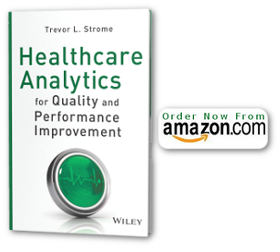The Apple iPad is being touted as a possible “game-changer” in mobile computing technology, and one of the industries that analysts expect iPad to have considerable success is healthcare. In fact, many healthcare systems vendors are already developing (or investigating the development of) versions of their software that are iPad compatible.
Overcoming Barriers
As a bridge between smartphone and laptop, the iPad’s relatively low price, ergonomic design, and intuitive user interface means it has potential to deliver unique mobile computing applications to users for a fraction of the price of most other current mobile platforms. These facts may help iPad overcome some traditional barriers to implementation of clinical information systems. Some of these barriers include software with poorly designed interfaces that do not integrate well into workflows, the inconvenient size and bulk of current mobile solutions (especially mobile carts or “workstations on wheels”), and high cost of procurement.
If the iPad (and associated clinical software systems) are embraced by healthcare professionals, the result may be an increased adoption of healthcare business intelligence and analytics applications. Currently, a limiting factor in the advancement of analytics in healthcare is the adoption rate of clinical (and other) healthcare systems. Simply put, without data available from various computerized source systems (such as an electronic medical record), there is no point in implementing an analytics capability beyond Microsoft Excel.
Improving Data Quantity and Quality
An increase in the adoption of mobile healthcare software applications would mean more data available for use in analytics tools. Mobile solutions for healthcare (such as potentially delivered on the iPad) may also help improve the quality of the data being collected.
Currently, at healthcare sites not implementing mobile solutions, care providers are forced to return to central workstations to input data from memory or from scribbled down notes. This disruption in natural workflow can cause data entry to be skipped because providers often get called to other tasks and may forget to enter something. Or, data may be entered inaccurately due to poor recall well after the fact.
If the iPad enables users to enter data at or near the point and time of care, important information may be less likely to be omitted, and may be more accurately entered as there will be less reliance on memory.
Cool Analytics Delivery
As opposed to merely being a data input device, the iPad may prove to be an outstanding analytics delivery system as well. The iPad user interface is designed for intuitive and interactive navigation. Rather than reviewing pages of printed reports or staring at static dashboards, the iPad user interface could enable truly interactive dashboards and reports in which users can explore data simply by using gestures to navigate through layers of information. Such interactivity could open the doors to greater interest in performance dashboard data to frontline staff and others who normally don’t show an interest in performance data.
The iPad (and other devices like it which are surely to follow) have the exciting potential to not only improve the way data is collected and made available for analytics, but will certainly transform the way business intelligence is delivered to and interacted with by many levels of staff within a healthcare organization.

{ 0 comments… add one now }